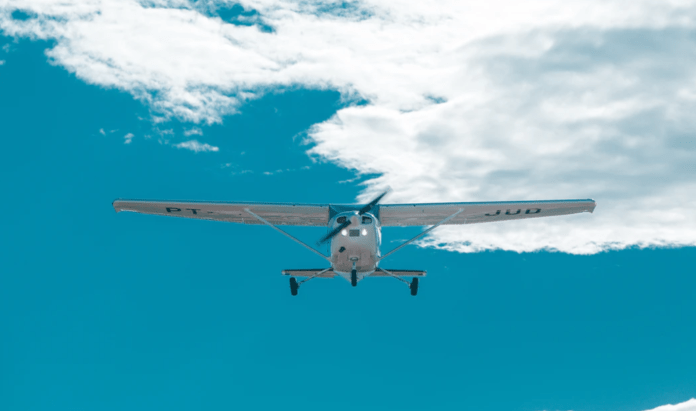Data from FlightAware shows that a Beechcraft Bonanza 36 took off from Myrtle Beach around 8:30 a.m. and was en route to Knoxville Downtown Island Airport in Knoxville, Tenn.
The plane ended up landing on Union Boulevard near the Duncan Bypass in Union, according to NBC affiliate WYFF.
It was not immediately known what caused the pilot to the land on the highway.
No one has been reported as injured.
The plane has since been towed from the highway.
According to Wikipedia: The Beechcraft Bonanza is an American general aviation aircraft introduced in 1947 by Beech Aircraft Corporation of Wichita, Kansas. The six-seater, single-engined aircraft is still being produced by Beechcraft and has been in continuous production longer than any other aircraft in history.
More than 17,000 Bonanzas of all variants have been built,[4][5] produced in both distinctive V-tail and conventional tail configurations; early conventional-tail versions were marketed as the Debonair.
Three major variants eventually comprised the Bonanza family:
- Model 35 Bonanza (1947–1982; V-tail)[11]
- Model 33 Debonair or Bonanza (1960–1995; conventional tail)[12]
- Model 36 Bonanza (1968–present; a stretched Model 33)[12]
The Model 33 Debonair was introduced in 1960 as a lower-priced model with more austere standard instrumentation, exterior equipment, paint schemes, and interior fabrics and trim than the more prestigious V-tail Bonanza.[6][13] However, most Bonanza features were available as factory options on the Debonair, and by the mid 1960s, most Debonair buyers were ordering most or all of these options. Realizing this, Beechcraft dropped the Debonair name and most of the basic and seldom-ordered standard features with the introduction of the E33 in 1968.[13]
Despite its name, the Twin Bonanza is a substantially wider and heavier aircraft that is mostly dissimilar to the single-engined Bonanza; the only major shared parts are the front fuselage sides, windows, and main cabin door.[14] However, the Twin Bonanza had trouble competing with the similarly capable but substantially lighter Cessna 310 and Piper PA-23, so Beechcraft used the basic Bonanza fuselage and many other Bonanza parts to create the twin-engined Travel Air, which was later developed into the Baron.


